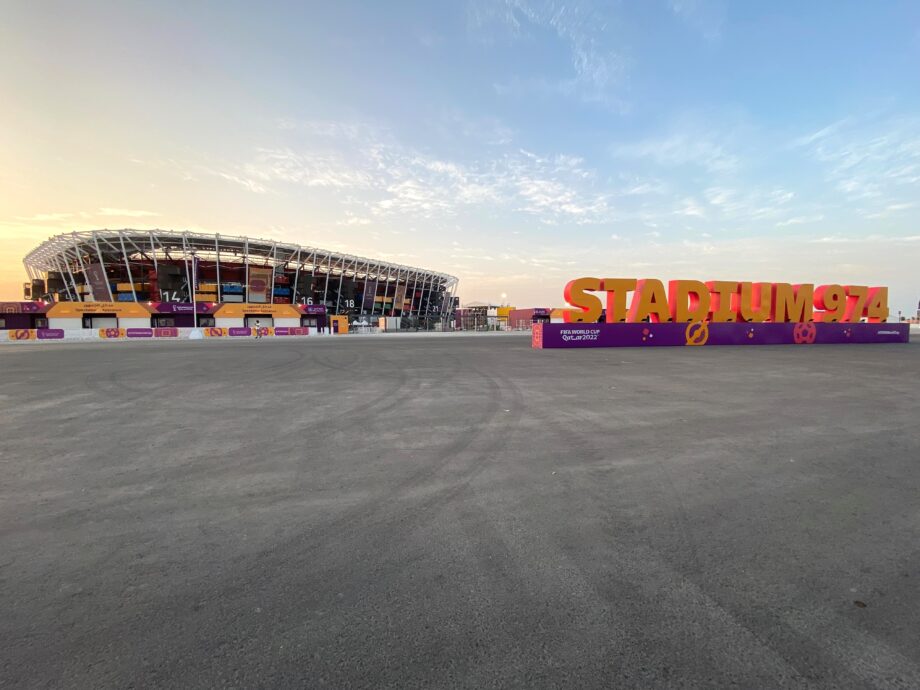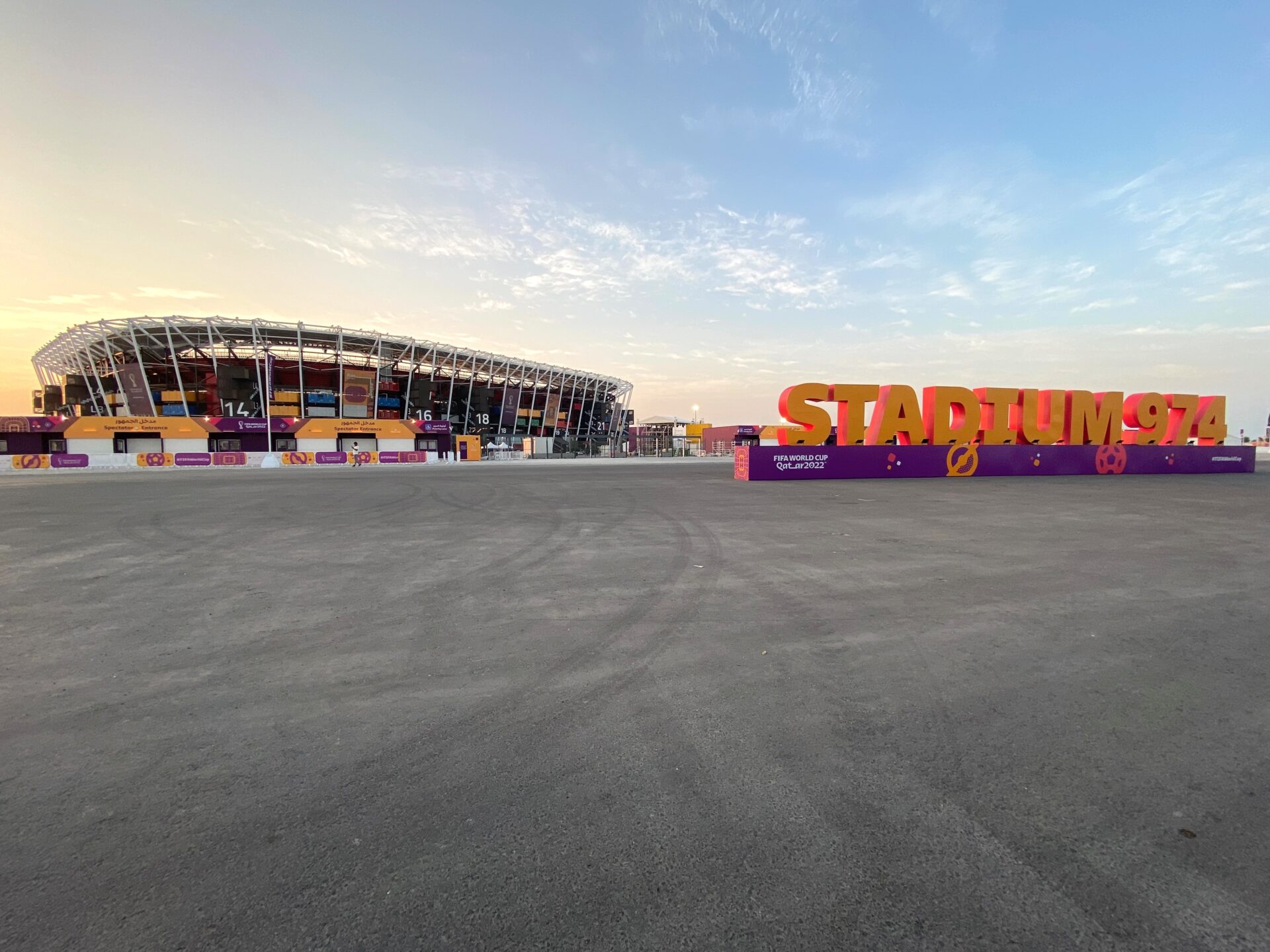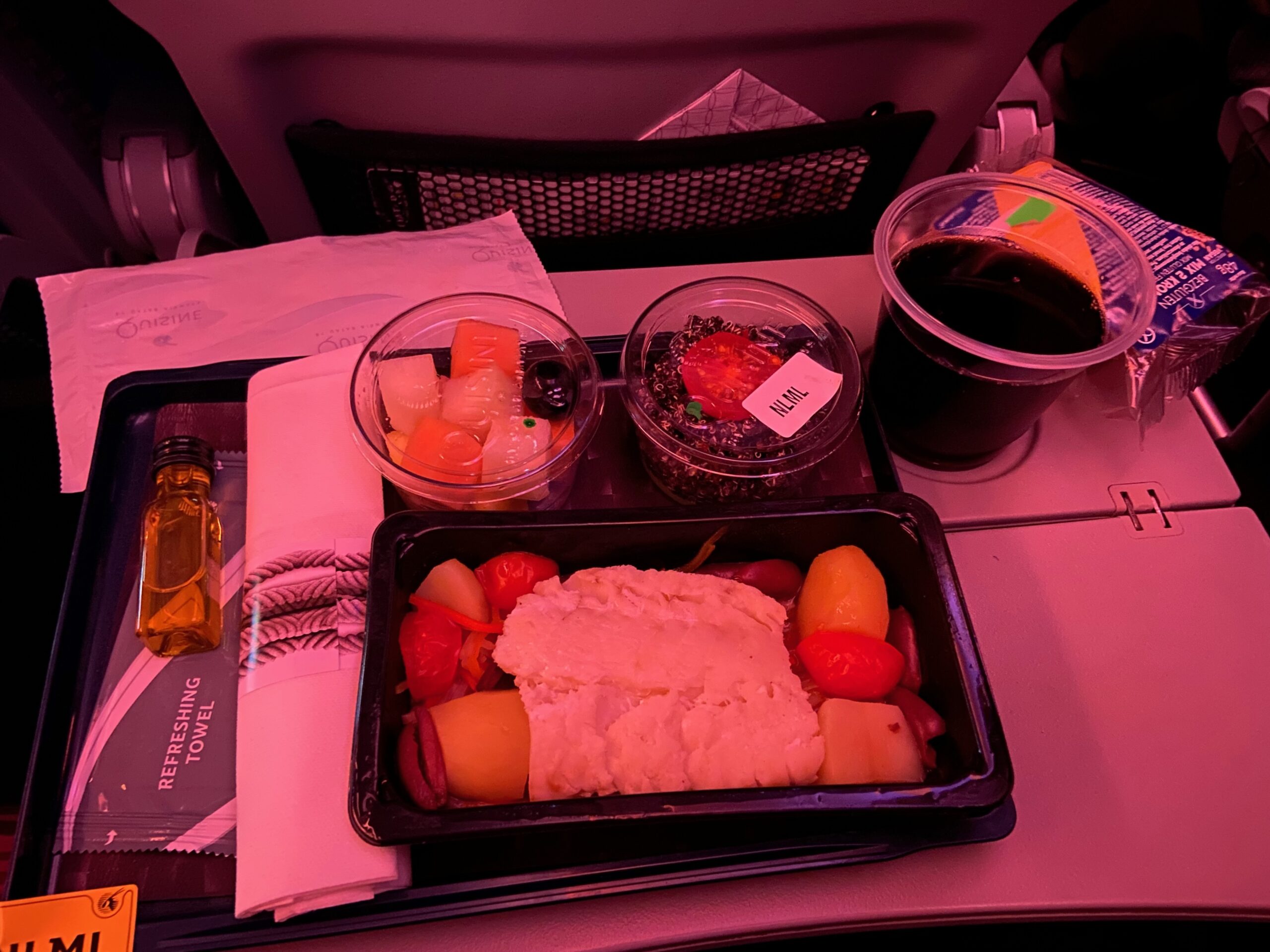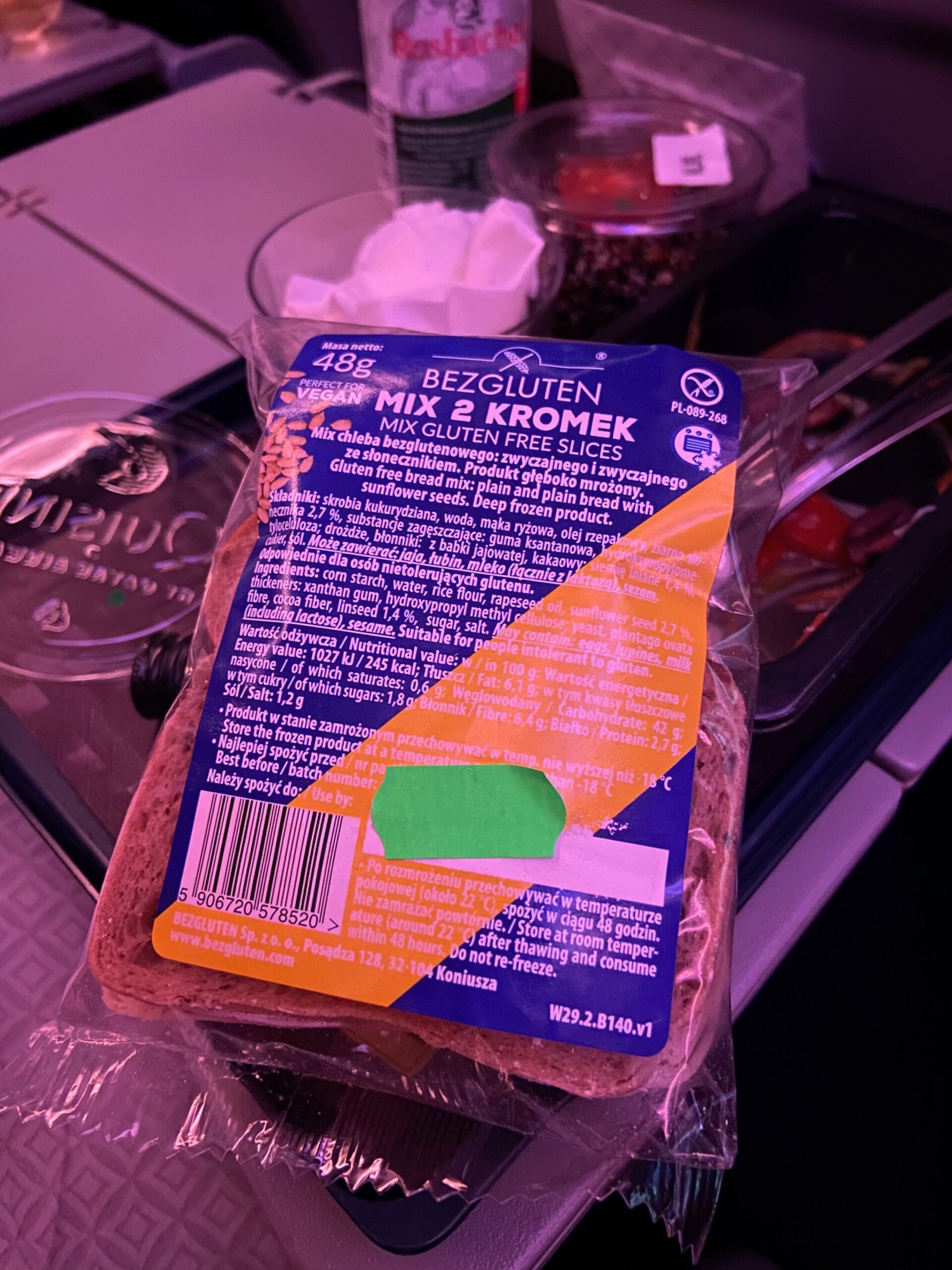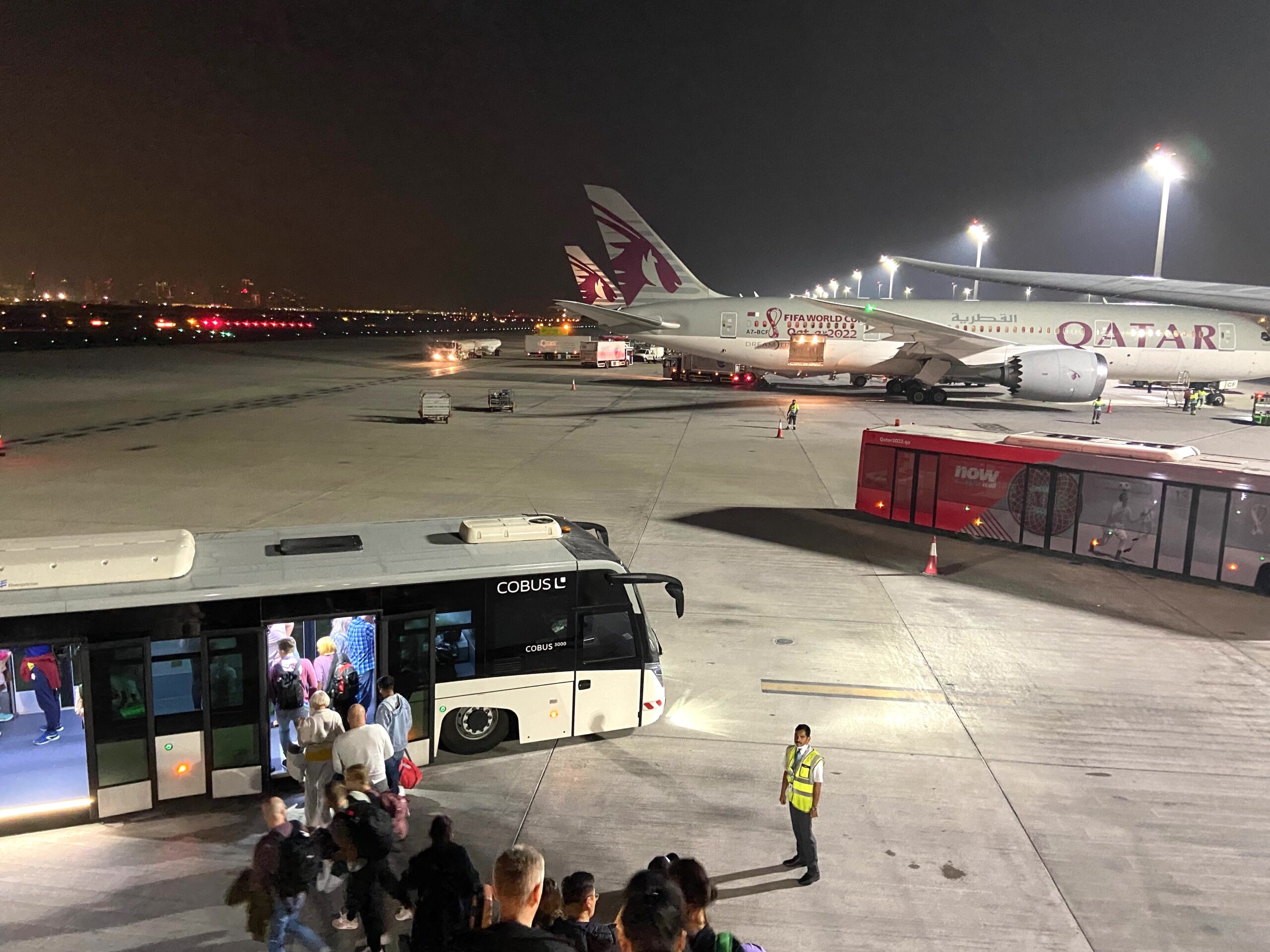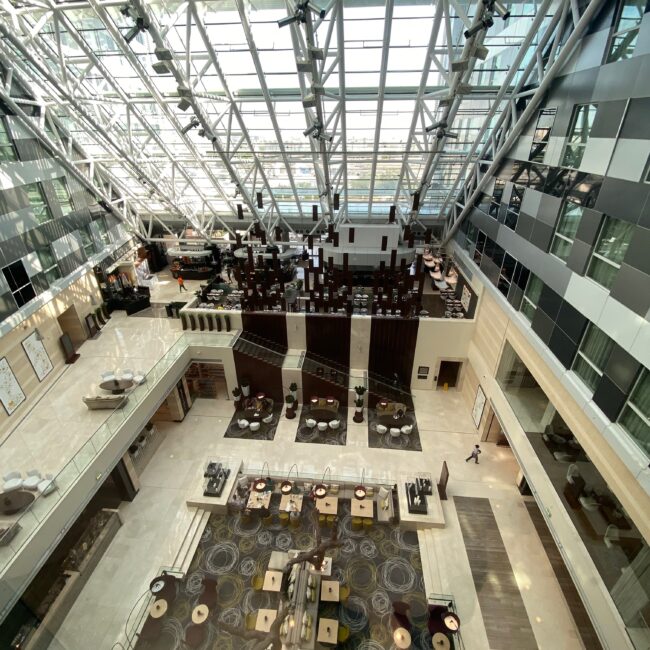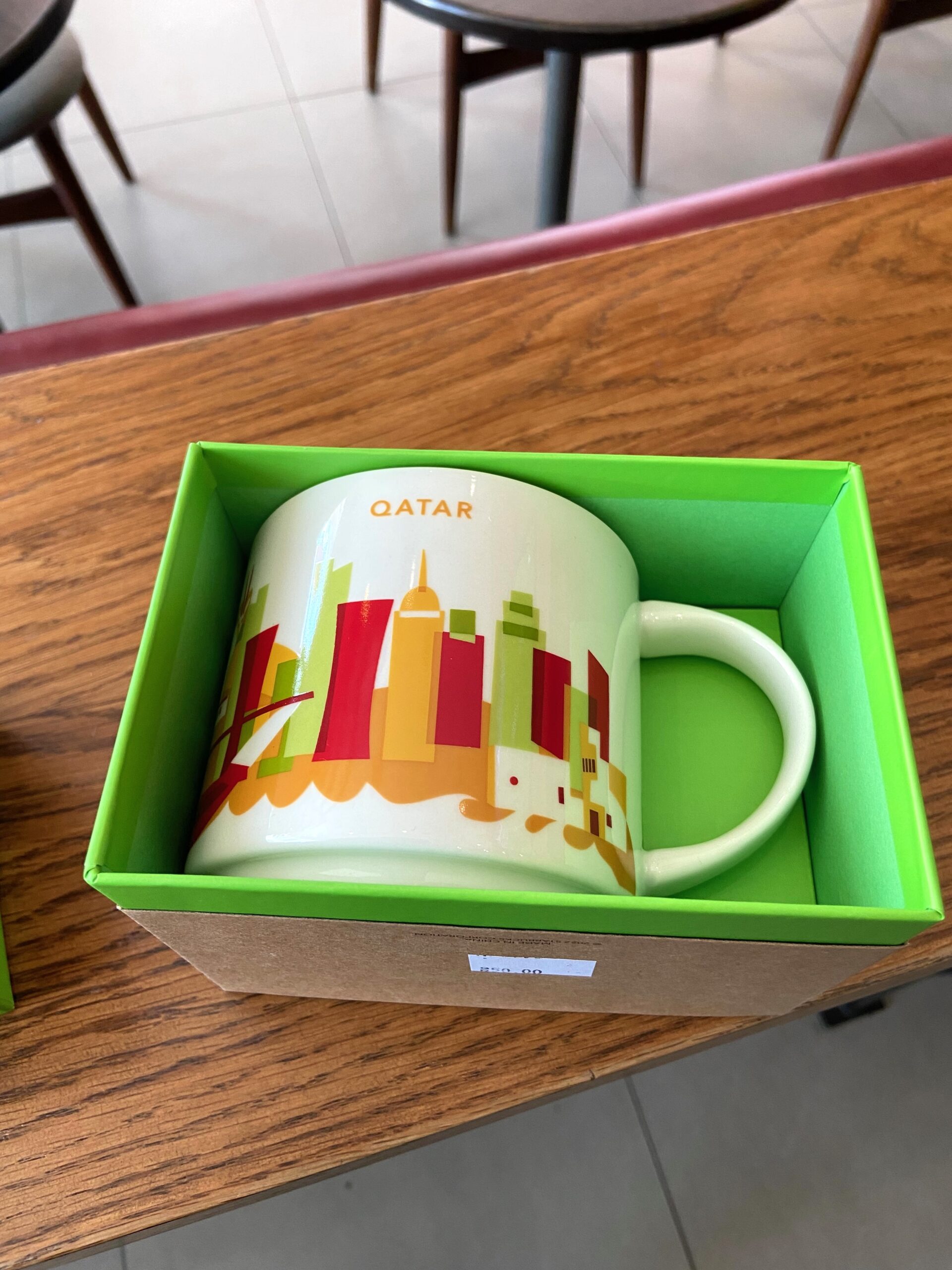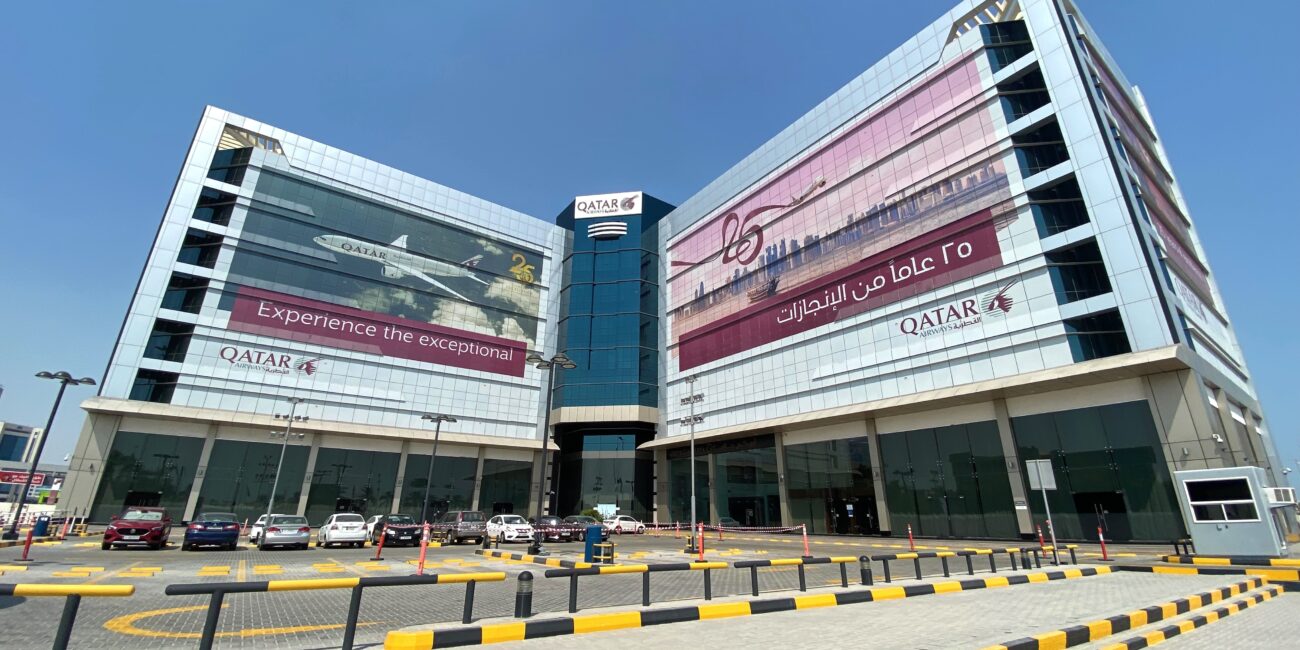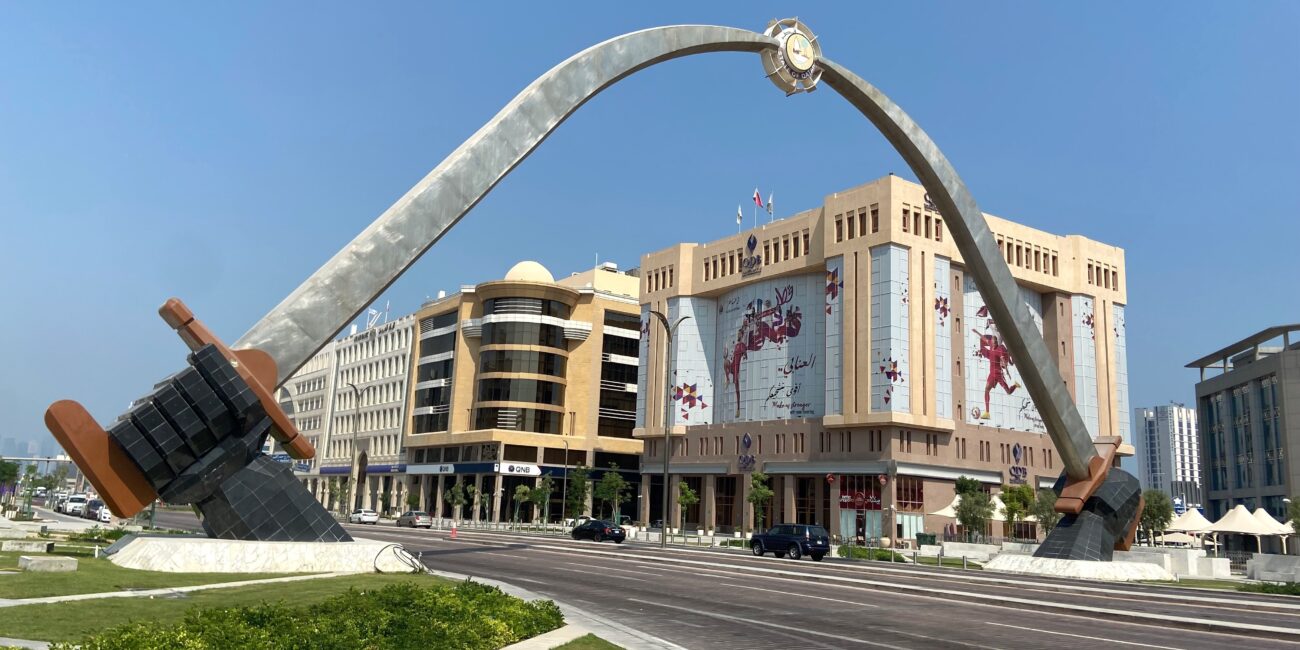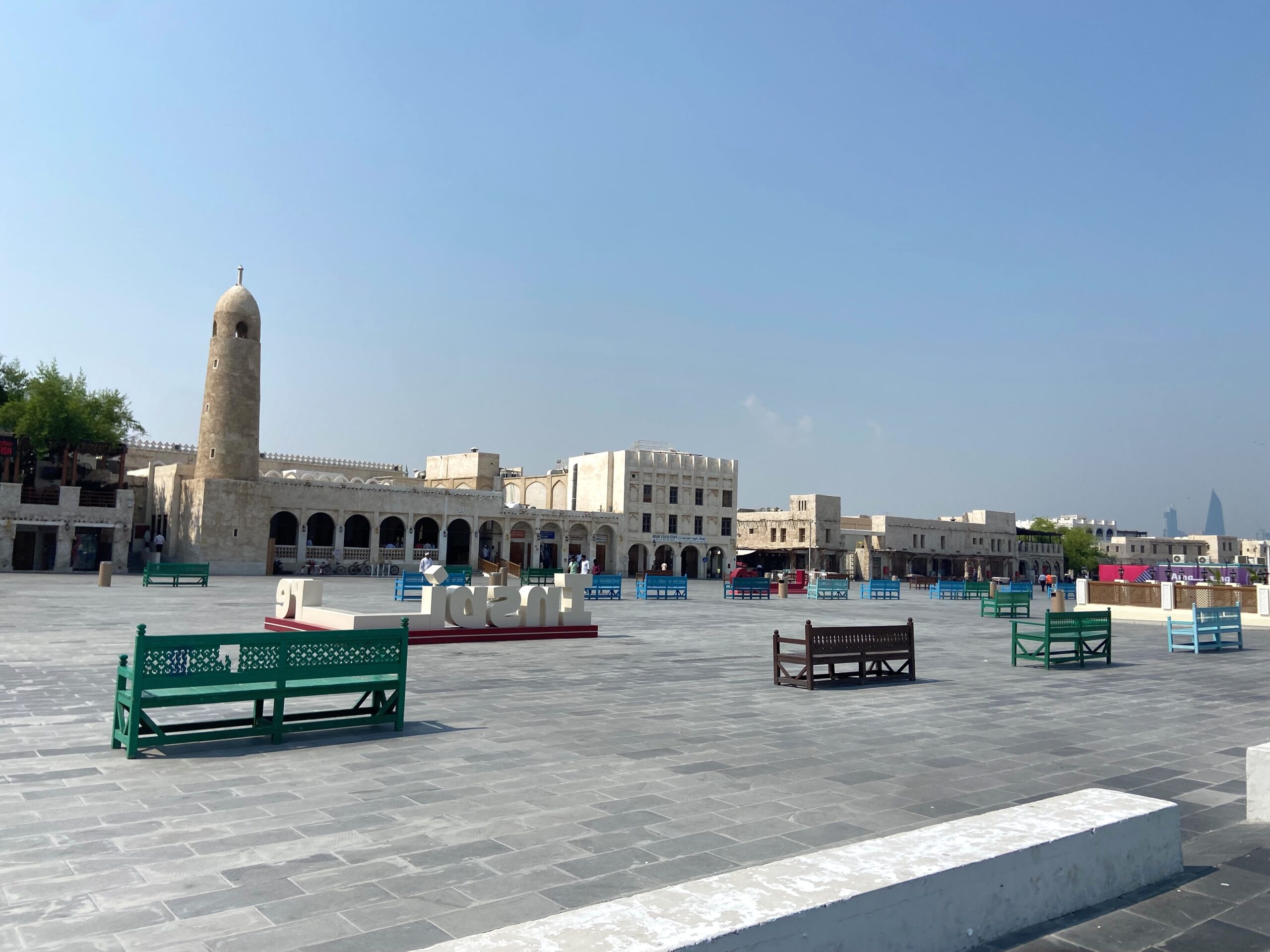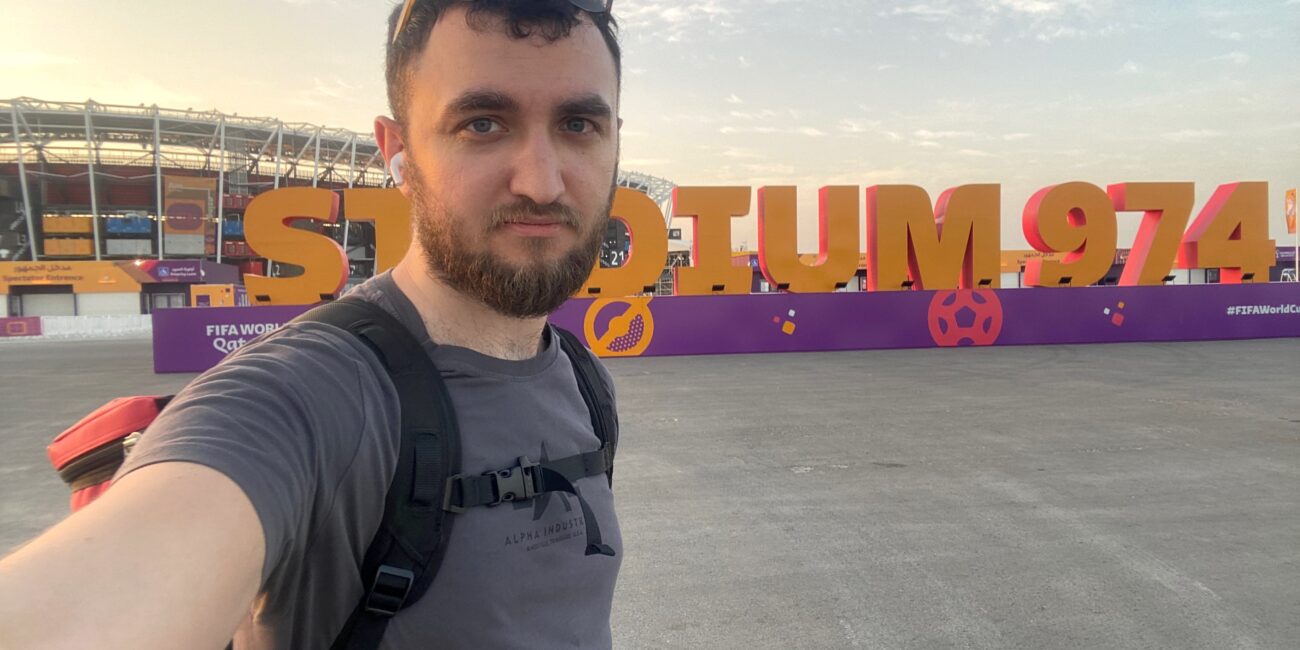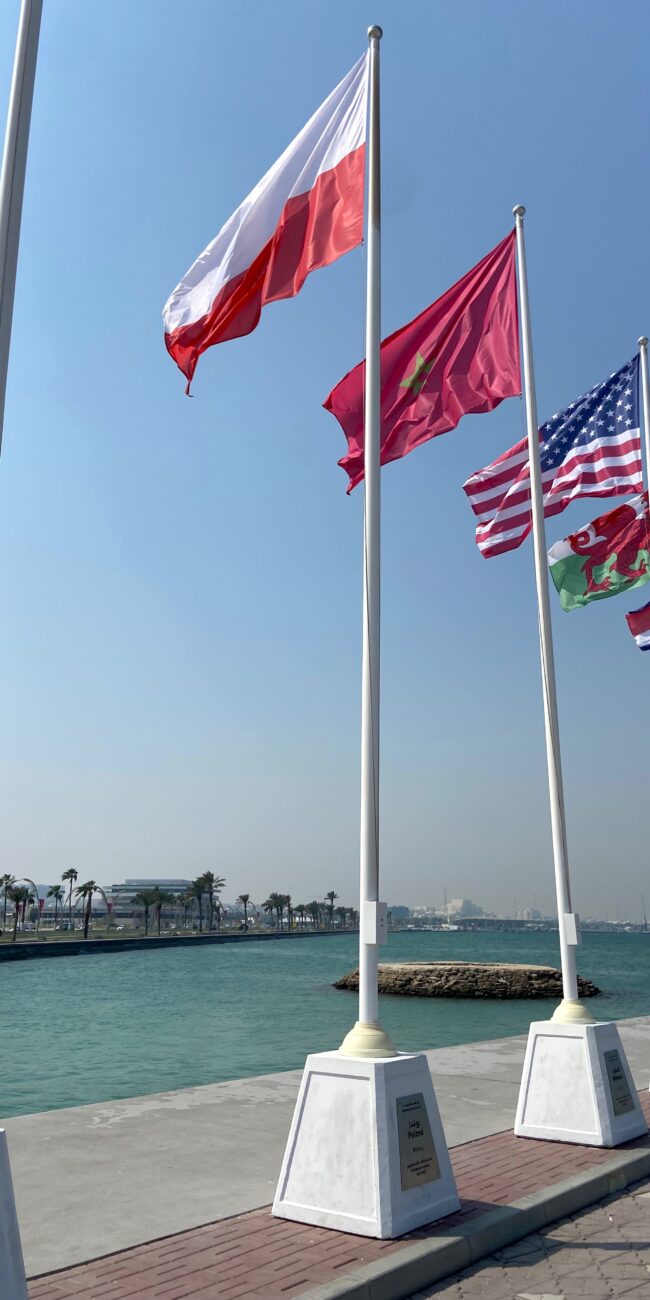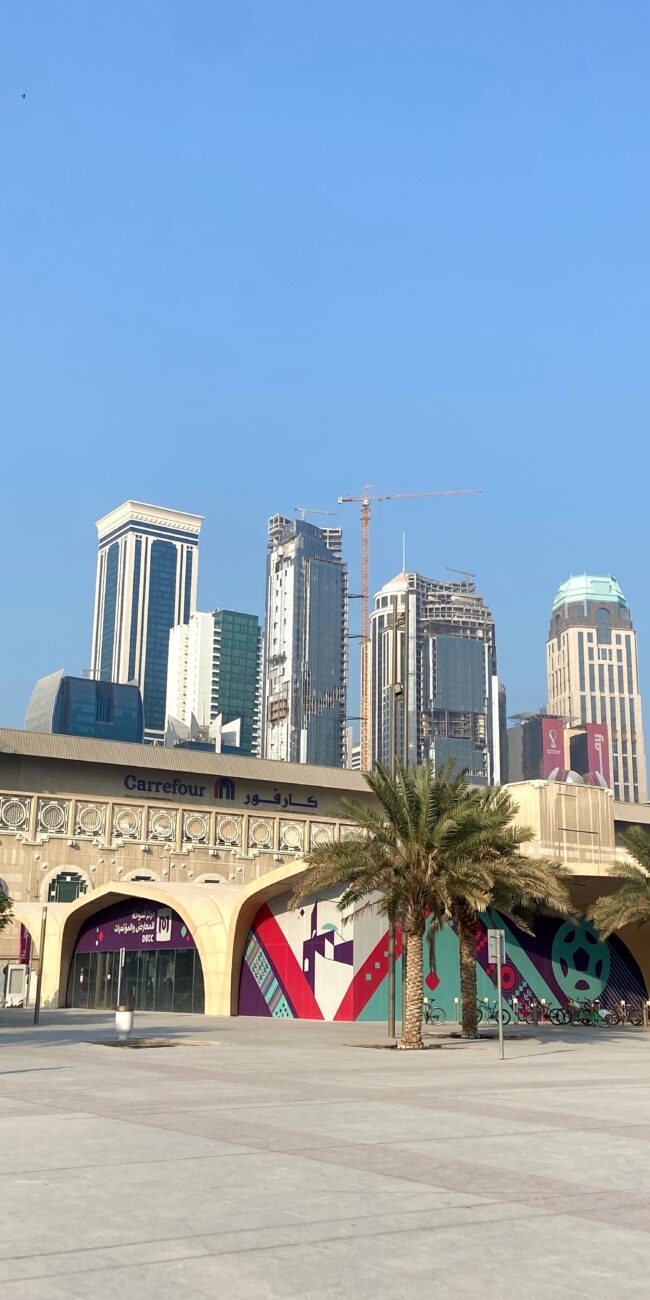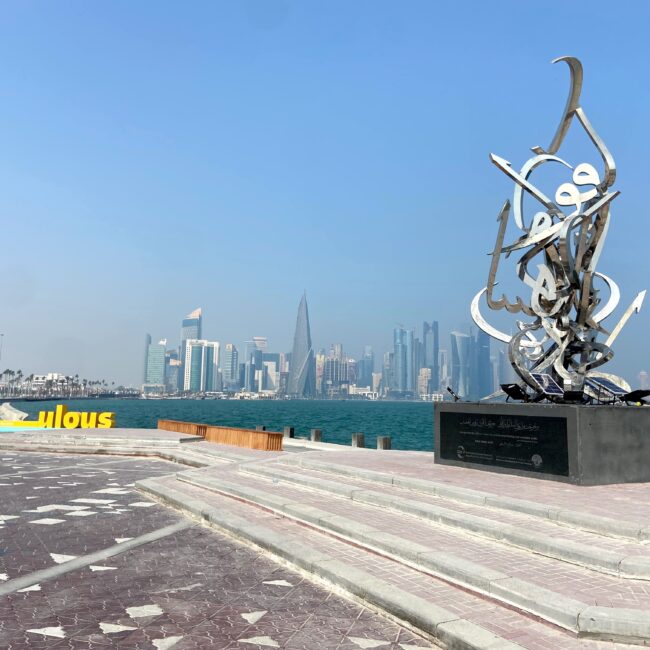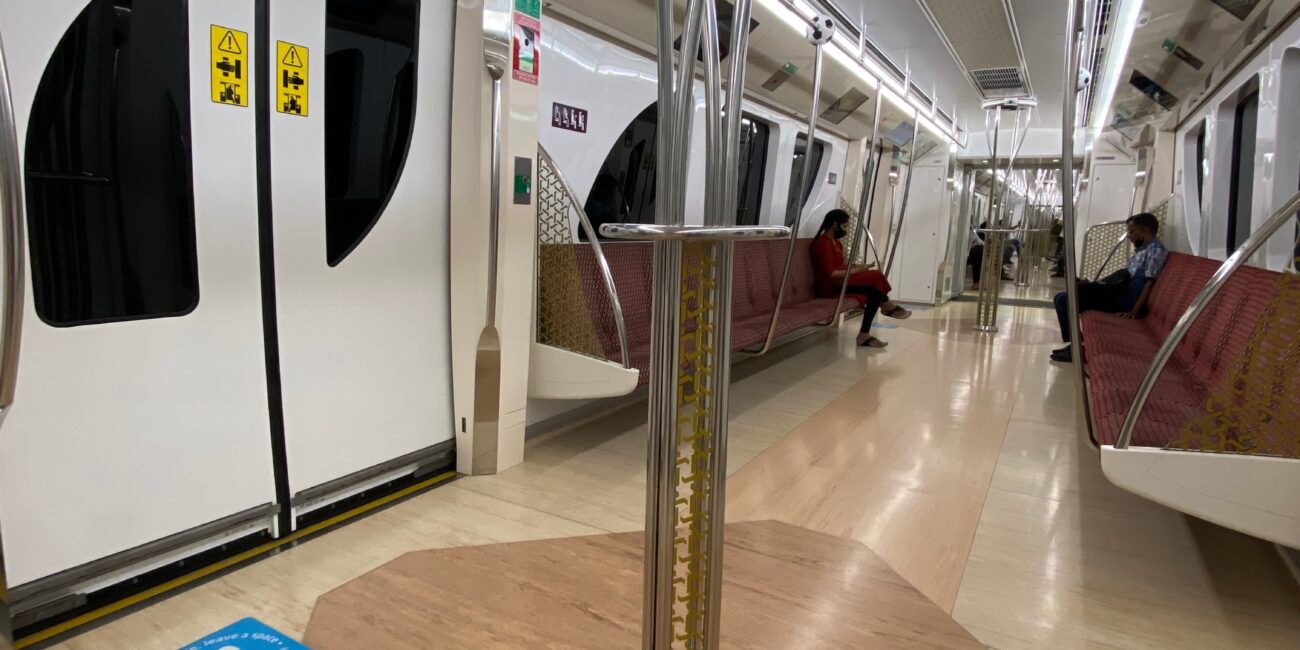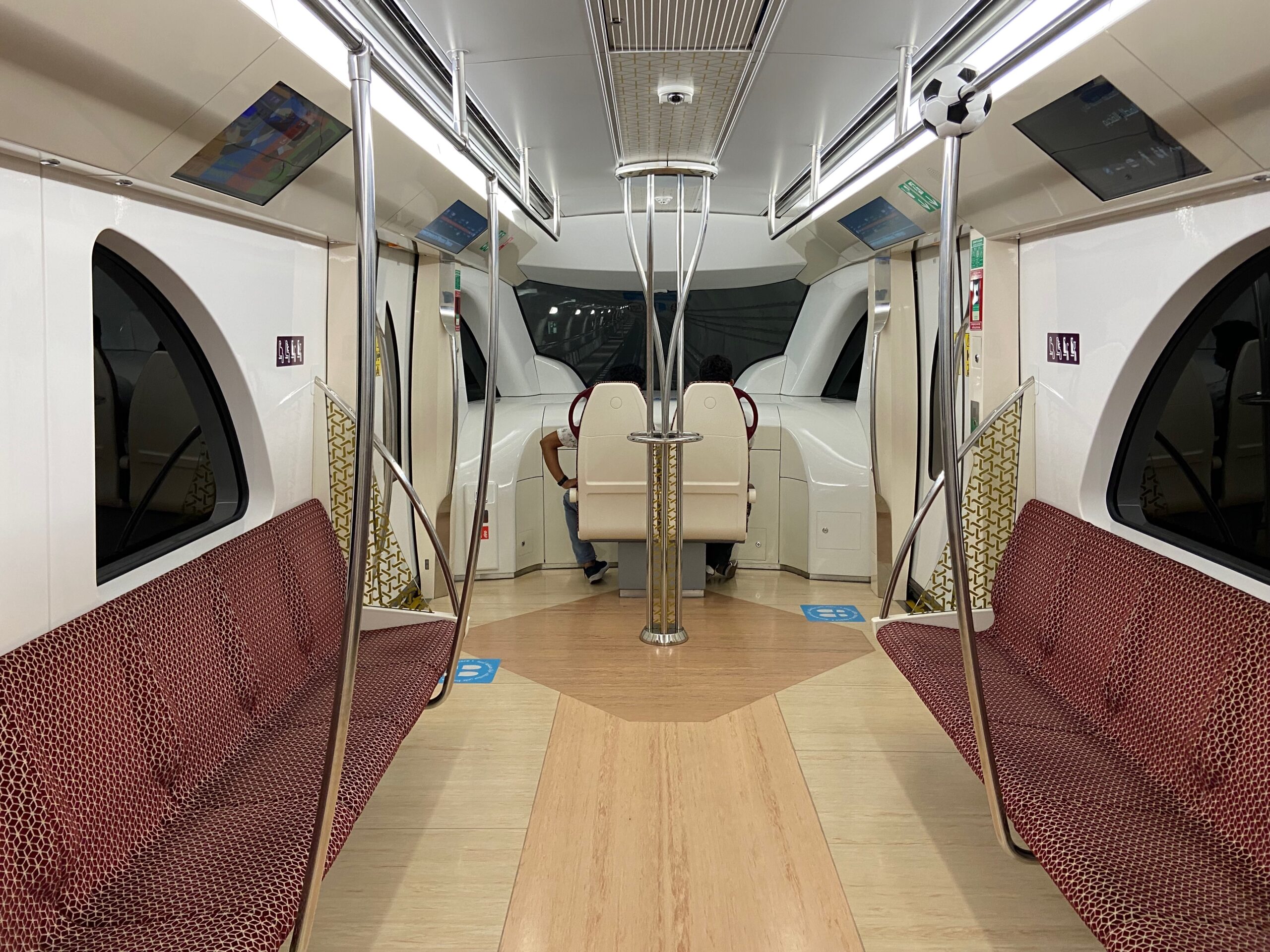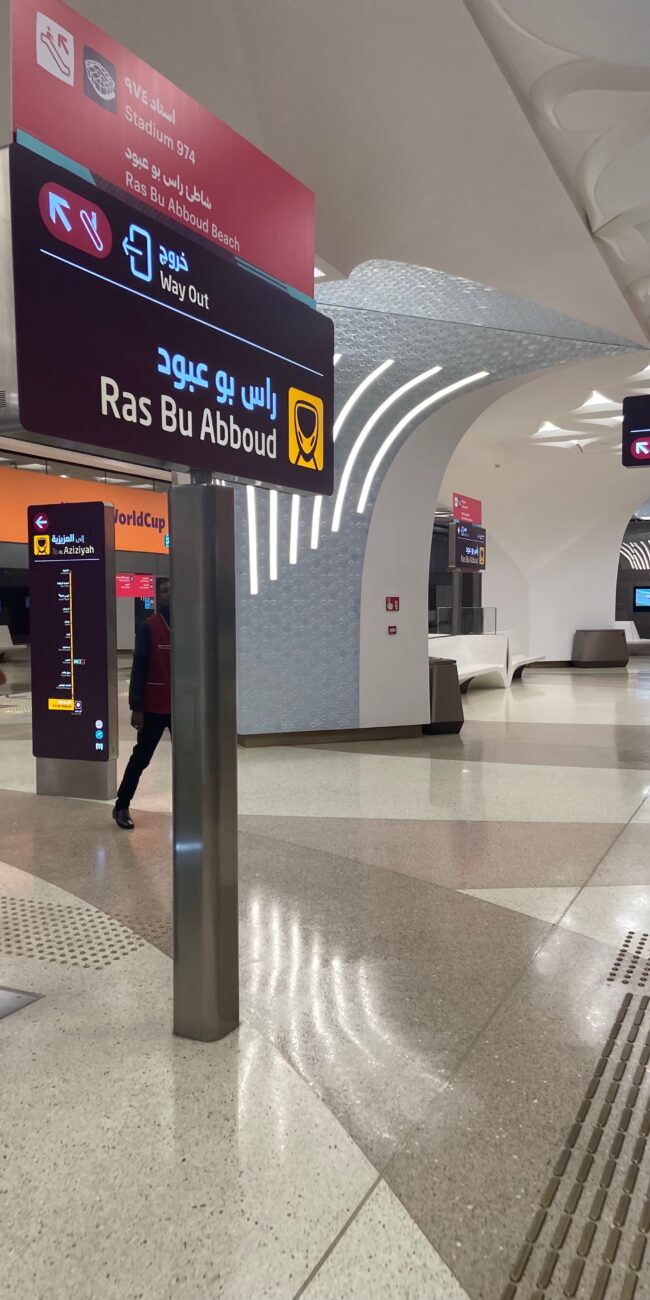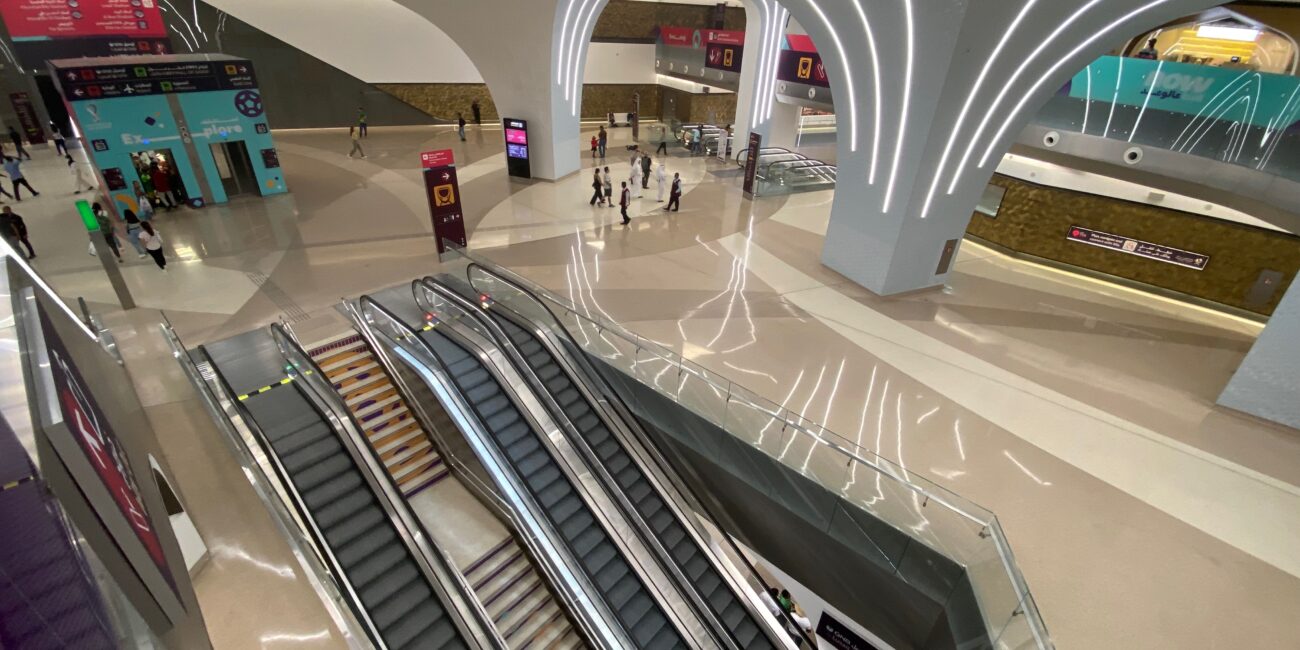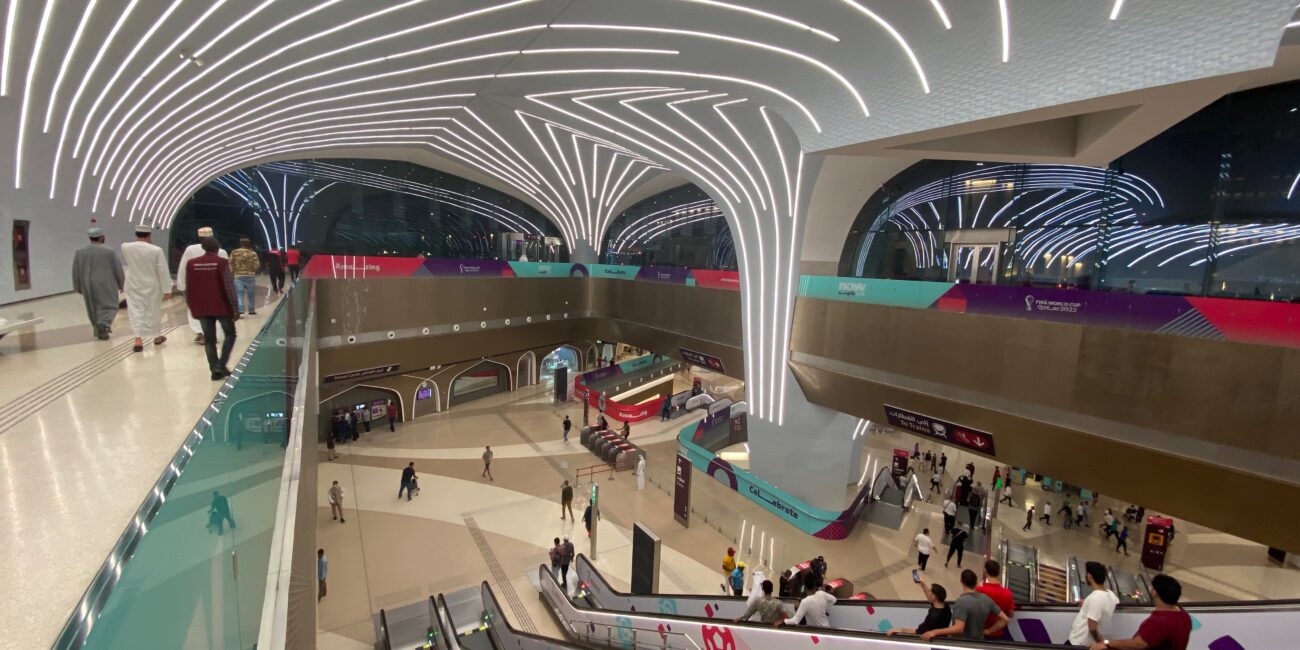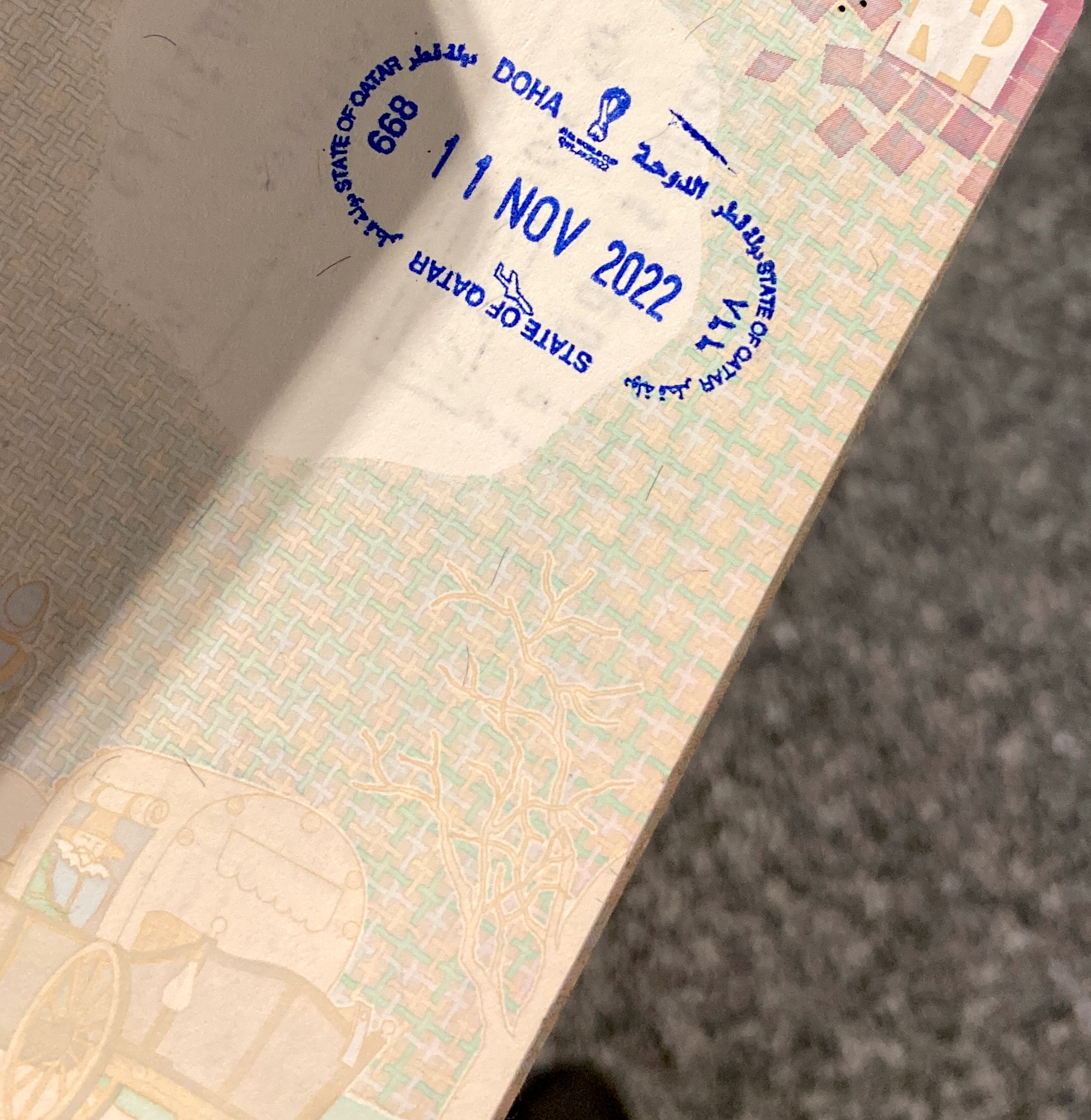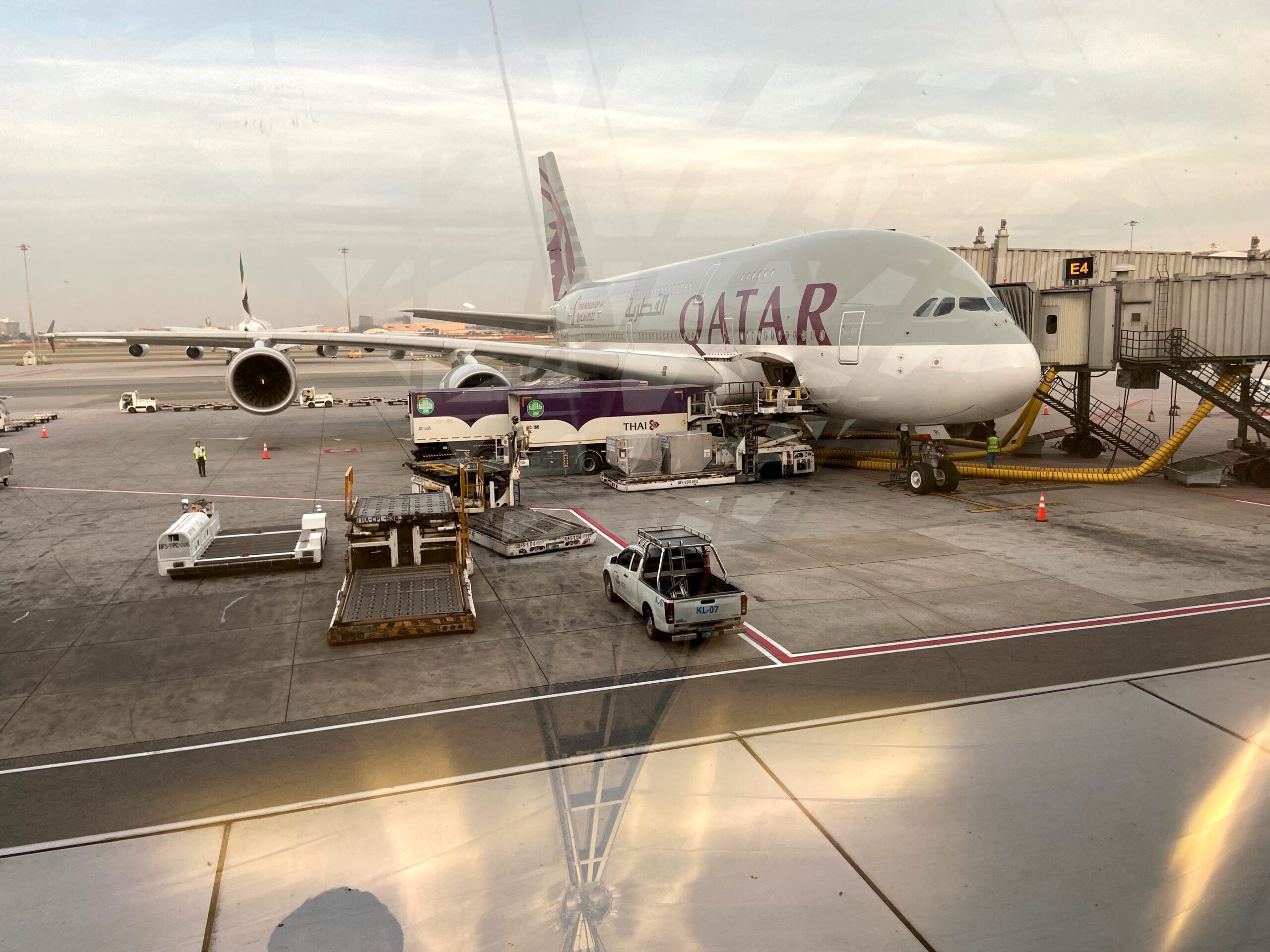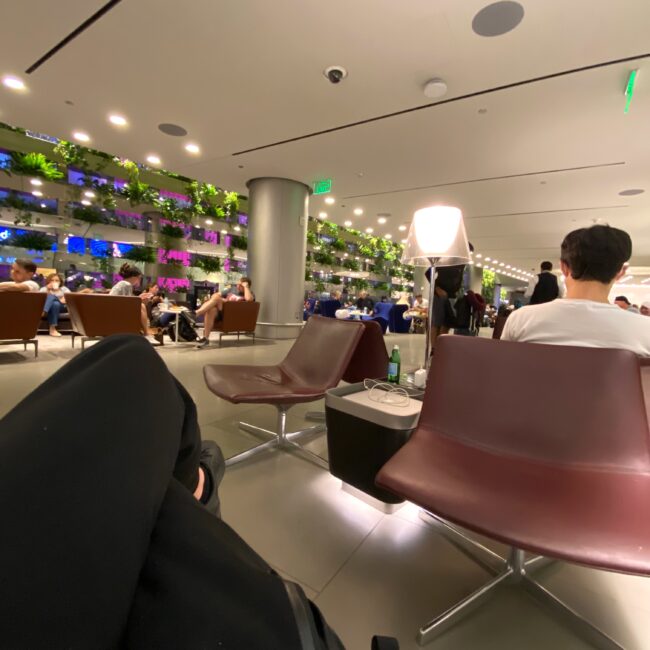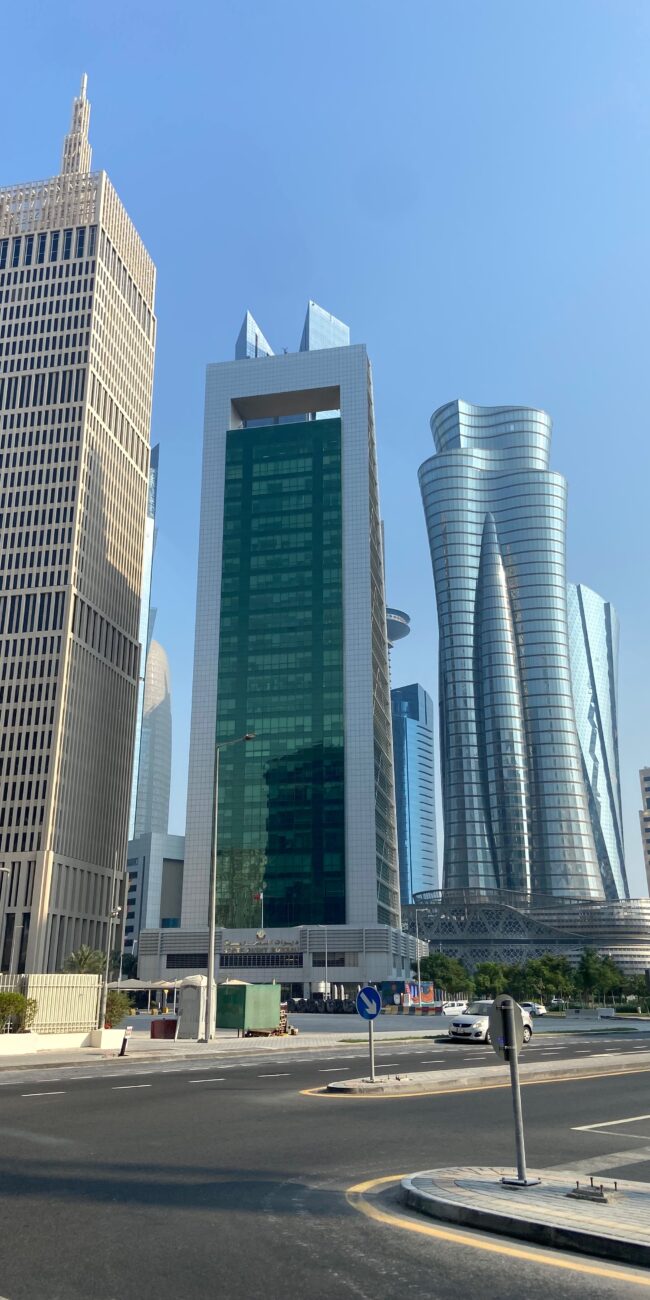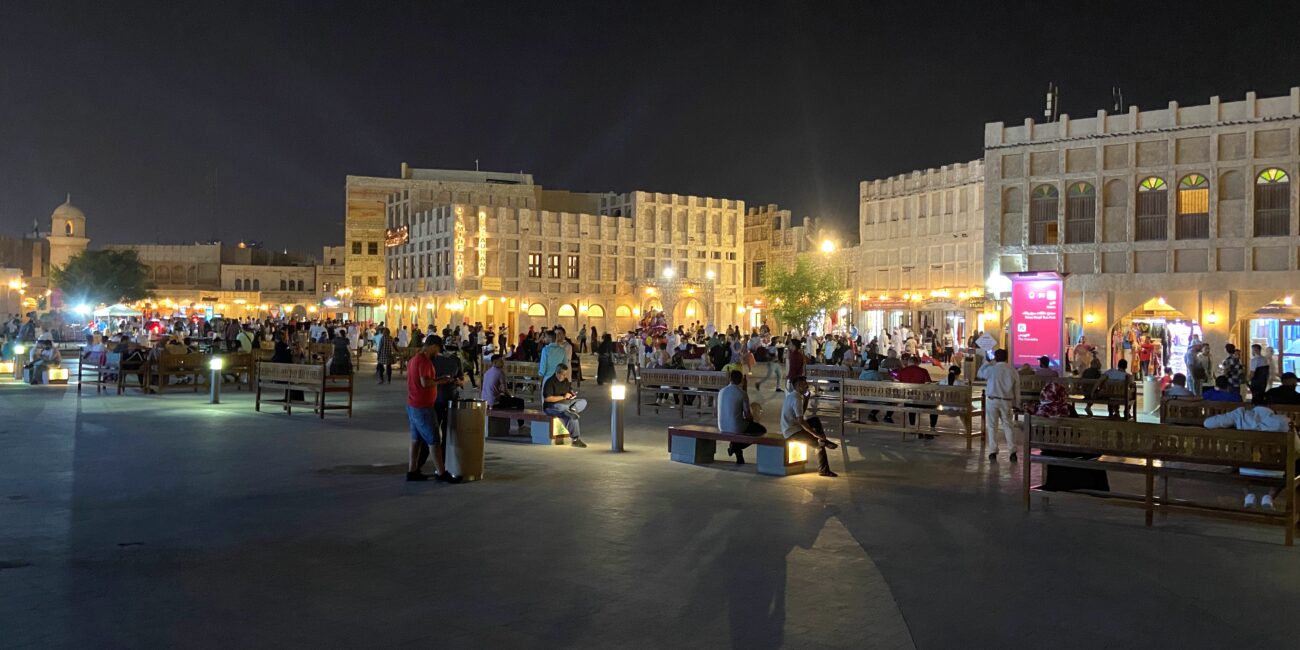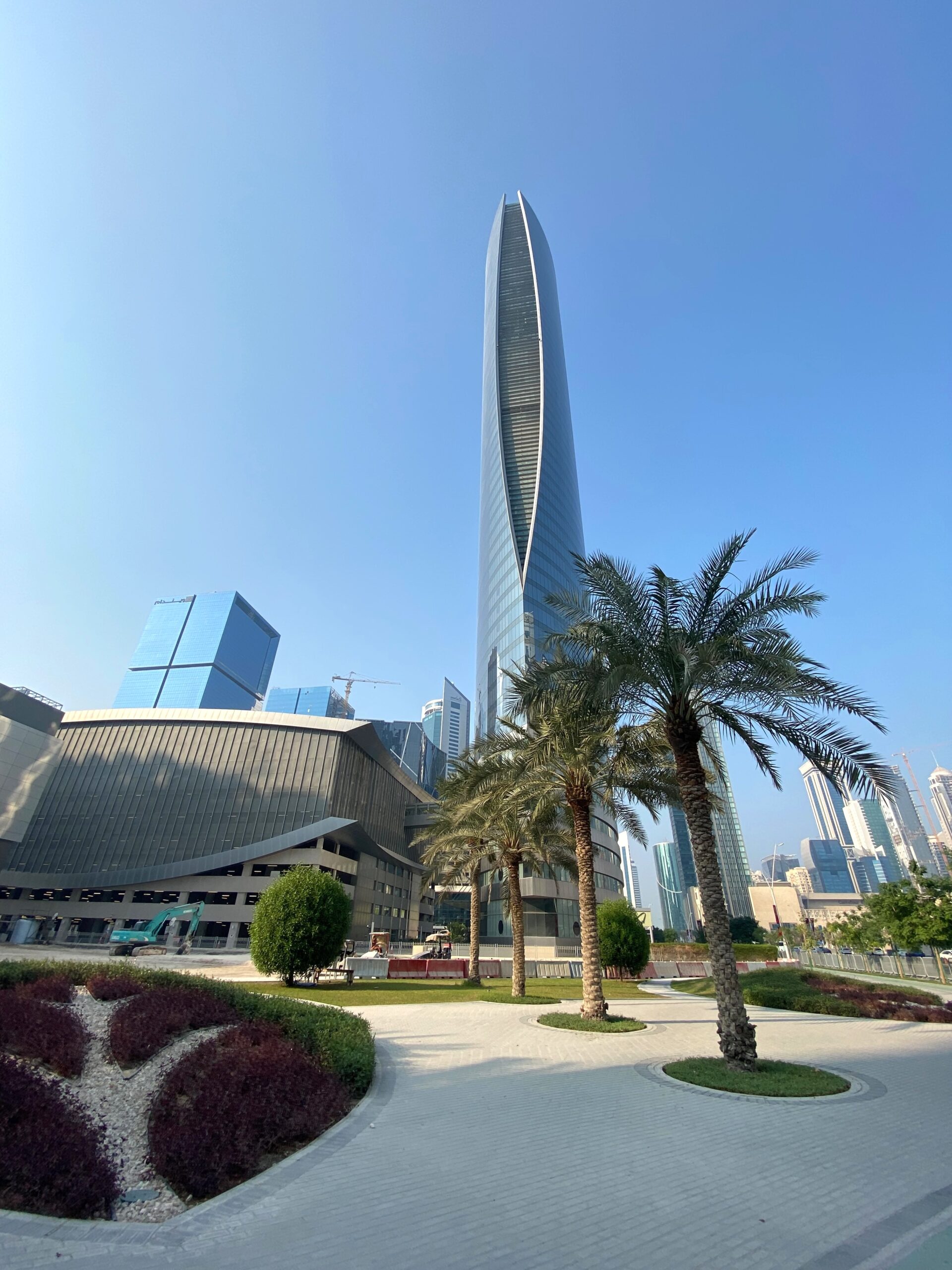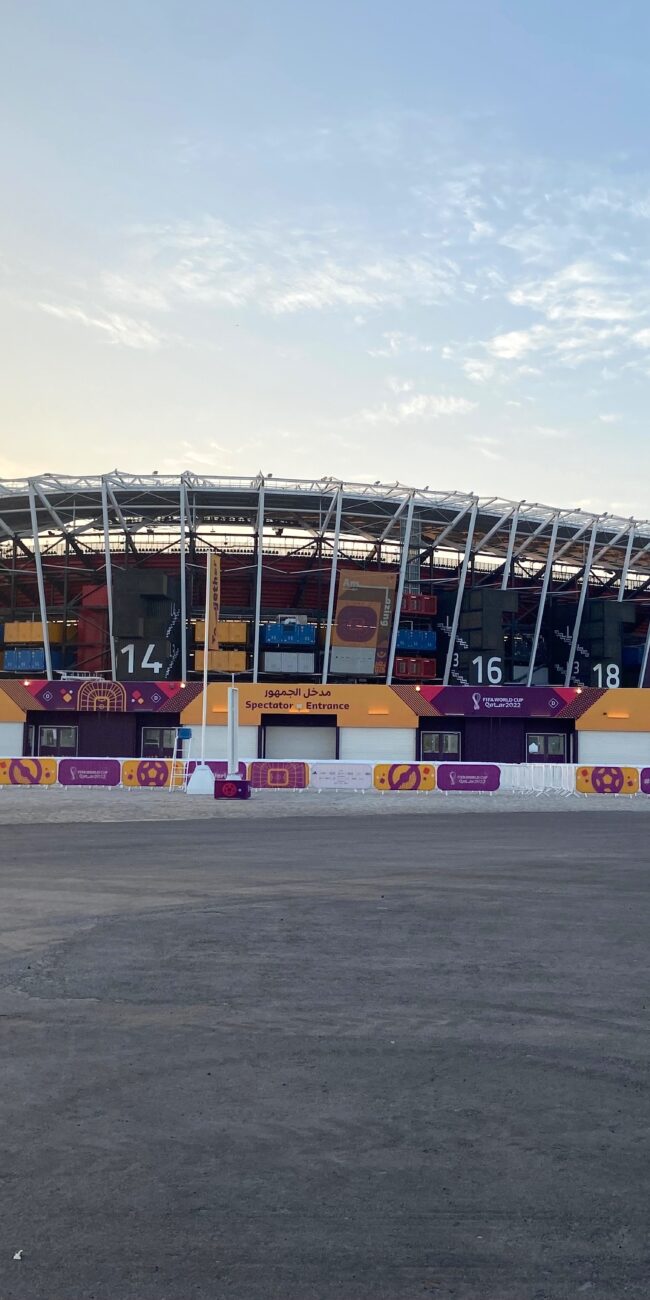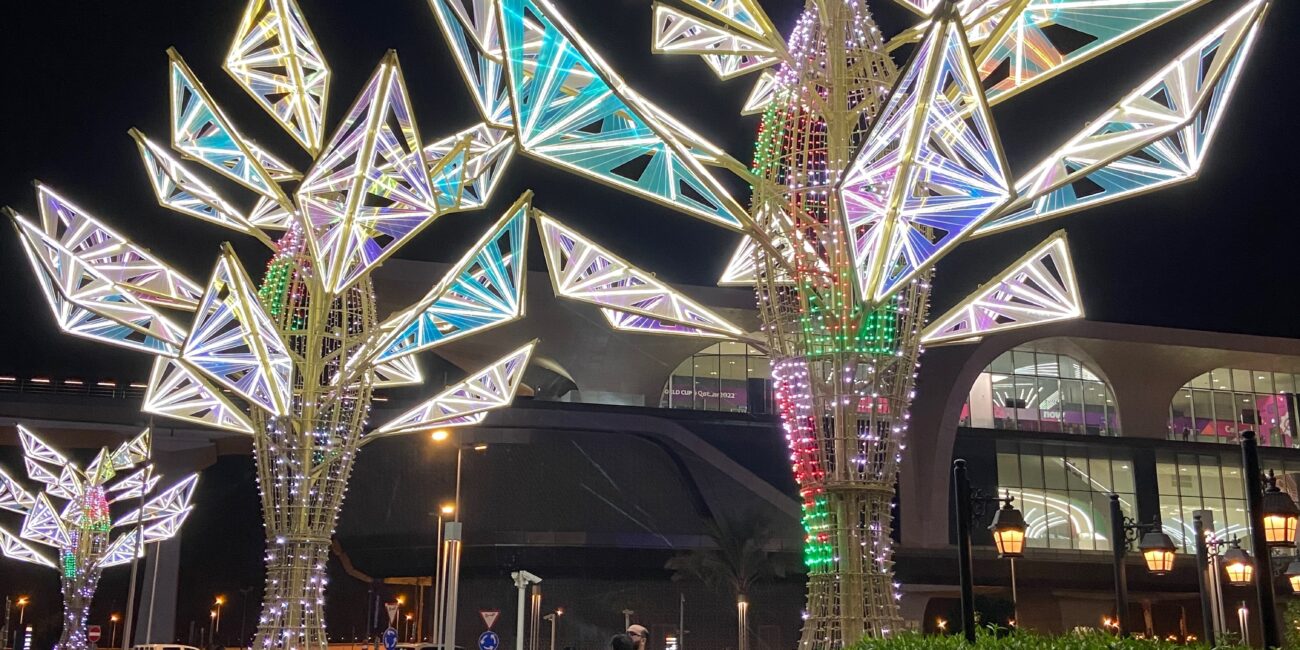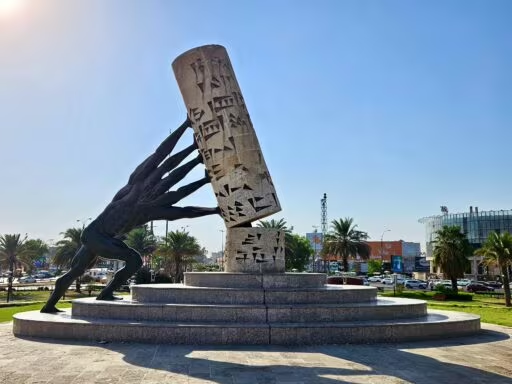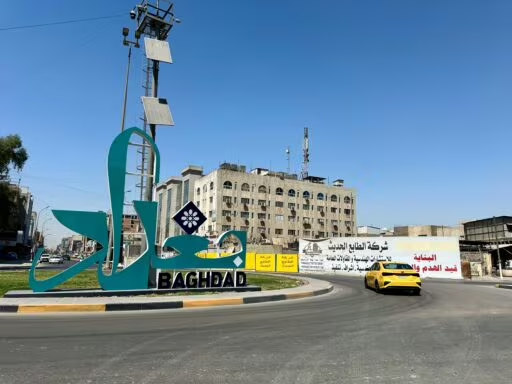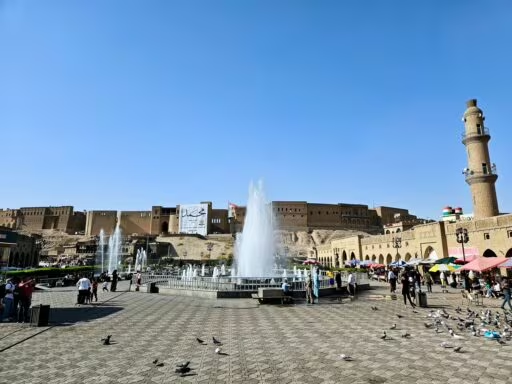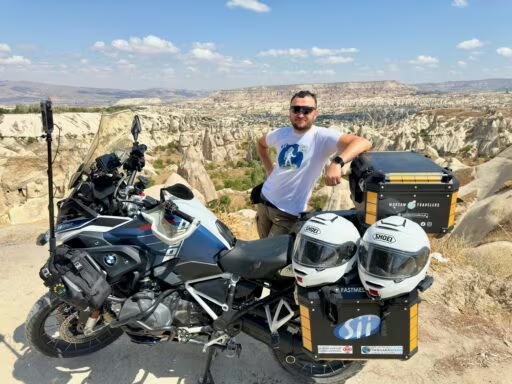This post is also available in:
Polski
Hello! 👋
Today, let me take you on a short journey back in time to November 2022. That’s when I embarked on my second trip to Thailand for an entire month. But before reaching my destination, I made a brief stop in Qatar. The reason? A stopover in Doha with Qatar Airways.
The FIFA World Cup 2022 was in full swing at the time, which seemed intriguing—not because I’m a football fan (truth be told, matches don’t really excite me, despite my years of working in sports broadcasting), but because of the whole atmosphere and organization. 😉
Where did the idea for Qatar come from during this time?
For a simple reason—while booking tickets to Thailand with Qatar Airways, I noticed an interesting option. By adjusting my reservation, I could extend my trip with a stopover in Qatar, giving me extra time to explore. The bonus? Better hotel rates and a more convenient later departure. It seemed like the perfect opportunity to visit a country hosting all the football madness at the time.
But these weren’t fully “normal” times yet. It was the tail end of post-pandemic realities. I still had to check various restrictions, verify entry requirements, and make sure I didn’t miss anything. A bit of extra paperwork, but as it turned out later—it was well worth it.
Procedures
In my case, things were a bit different. While Thailand had lifted most restrictions, Qatar was implementing changes just ahead of the FIFA World Cup. I departed on October 20, 2022—before the date when Qatar eased most of its COVID-19 requirements (November 1, 2022). In practice, this meant I needed a valid negative COVID-19 test, compliant with the country’s guidelines.
Additionally, starting November 1, 2022, Qatar implemented entry restrictions for individuals without a Hayya Card—a special identification card for FIFA World Cup 2022 fans. This meant that from that date, the country’s borders were primarily open to Hayya Card holders, aiming to manage the influx of tourists during the tournament.
The Hayya Card served not only as an identification document but also as an entry visa and provided access to public transportation during the World Cup.
Theoretically, I was hoping that non-fans might also have a chance to enter Qatar (after all, someone might want to visit the country for reasons other than football). I thought that maybe registering in the Hayya system could open some doors, but at the time, nothing was certain. Everything seemed to be changing dynamically day by day.
And that brings us to the return procedures, but I’ll get to that later—because that’s when the real chaos began. 😉
Departure from Warsaw
Smooth. I checked in online, which always saves a bit of time, and there were quite a few passengers. Qatar Airways’ service? No complaints—professional as always. However, one thing left me slightly disappointed: our plane wasn’t accessed via a jet bridge. Instead, we had to take a bus to the aircraft, which, to be honest, reminded me a bit of budget airlines like Ryanair.
I do realize, however, that this wasn’t really the airline’s fault but rather an issue with Warsaw’s airport. Okęcie is simply too small to handle multiple large aircraft simultaneously. That’s just how it is—instead of the convenience of a jet bridge, we get a little bus tour across the tarmac.
Maybe one day, the time will come when the Central Communication Port becomes a reality, and Poland can boast a modern, large airport in this part of Europe. For now, we have to make do with what we’ve got—a “tin shed” known as Okęcie. 😉
Walking? Why not! Welcome to Qatar!
And that’s where the trouble began—both literally and figuratively. When I landed in Doha, everything seemed fine… until I went the wrong way. Instead of heading to the area for passengers ending their journey in Qatar, I accidentally ended up in the transit zone. If you’ve never been to a massive airport like Istanbul or Dubai, let me tell you—it’s easy to rack up a ton of steps just by getting lost. And that’s exactly what happened to me: wrong direction, aimless wandering, and an hour wasted trying to find the exit to passport control.
The passenger service staff tried to help, but it wasn’t easy. A bit of trial and error, a bit of frustration, but eventually, I made it to passport control. And here’s where the comedy starts—nobody cared about my COVID-19 test. Seriously, not even a glance. Great, 200 złotys down the drain. And back in Poland, nobody checked it either, so let’s just say it was one of the most pointless expenses of this trip.
Since our flight from Warsaw landed at 2 a.m., the metro had long stopped running. I also didn’t bother getting a SIM card for just one day—it didn’t seem worth the hassle. So, I ordered an Uber, and that’s where the fun began. I had to position myself just right to catch the airport’s Wi-Fi signal while also keeping an eye on my car’s arrival. In the meantime, a few drivers approached me, curious about migrating to Poland and whether working for Uber there would be worth it. I told them it probably wasn’t the best idea. 😄
I finally made it to the Hyatt Regency Oryx, which was conveniently close to the airport. And I have to say—it was a great place. Breakfast included, a lovely room, friendly staff, and super flexible check-in. All I had to do was provide my departure time, and everything was sorted—I could explore the city without worrying about my luggage. That was a huge plus! So far, everything was going smoothly, at least from the moment I arrived at the hotel. 😊
First impressions from Qatar
In the morning, I woke up and had breakfast—the hotel was very accommodating, so even with my lactose intolerance, I had plenty of milk options for my coffee. After my meal, I decided to go for a walk since my flight was scheduled for the evening. Trips like this are a perfect opportunity to rack up some serious steps—and I certainly did!
That’s also when I discovered that on Fridays, the Doha metro doesn’t run as usual and only starts operating in the afternoon. Oh well, walking is good for your health. My first impressions? The city felt less dynamic, somewhat reminiscent of Abu Dhabi.
Qatar is a small country located on the Arabian Peninsula, along the Persian Gulf, with a total area of approximately 11,586 km². For comparison, it’s slightly smaller than the Masovian Voivodeship in Poland. The capital city, Doha, is home to over 80% of the country’s population.
The temperature was pleasantly warm, although the sun was a bit intense at times. I didn’t withdraw any cash since I could pay with my card everywhere. During my walk, I stumbled upon a Starbucks and, of course, picked up a mug for my collection. Another one. 😂
What did the city look like before the World Cup?
In October 2022, just weeks before the FIFA World Cup, Doha was buzzing with preparations for the grand event. Signs of the upcoming tournament were everywhere—banners, posters, and decorations related to the World Cup adorned streets, buildings, and public spaces. The city was working intensively to complete its infrastructure, including stadiums and fan zones, to ensure the best possible experience for visitors.
While walking around the city, I noticed numerous fan zones set up for visitors. Interestingly, in many places, I came across groups of fans, such as those supporting Portugal, who looked surprisingly like local residents. This phenomenon was widely discussed, with some suggesting that local residents might have been hired to play the role of fans from different teams to enhance the diversity and atmosphere leading up to the tournament.
Use of inexpensive workforce
In preparation for the FIFA World Cup 2022, Qatar invested significant resources in developing its infrastructure, including stadiums, hotels, and roads. Unfortunately, these ambitious projects came at a cost to migrant workers, who made up around 90% of the country’s labor force. Many of these workers came from South Asian countries such as Nepal, India, and Bangladesh.
Human rights organizations, including Amnesty International, repeatedly raised alarms about the abuse of these workers. Allegations included forced labor, non-payment of wages, excessively long working hours, and unsafe living conditions. In 2021, Amnesty International released a report highlighting that, despite some reforms, the exploitation of migrant workers in Qatar remained widespread.
In response to international criticism, Qatar took steps to improve the situation for workers. Labor law reforms were introduced, including the abolition of the kafala system, which tied workers to their employers, and the establishment of a minimum wage. Additionally, the Ministry of Labor was created to oversee the enforcement of these new regulations. However, the effectiveness of these reforms was questioned, with their implementation widely regarded as insufficient.
It’s worth noting that despite some progress, many workers still faced difficulties in enforcing their rights. The inability to form unions and limited representation in so-called Joint Committees meant their voices remained largely unheard. Additionally, some reforms applied to only a small fraction of the workforce, which significantly limited their real impact on improving working conditions.
Metro in Doha
One of the biggest surprises during my stay in Doha was the metro. Honestly, I didn’t expect it to be so modern and enjoyable to use. It was one of those moments when you realize just how advanced transport infrastructure can be in countries that prioritize development with such ambition.
It consists of three lines, with the central hub being Msheireb Station, where all three lines intersect, allowing for convenient transfers. Construction of the metro began in 2013, and the first sections were opened to the public in May 2019.
The first thing that stands out is the design of the stations. They are beautiful, modern, and almost futuristic—both inside and out. Everything is designed with attention to detail and kept so impeccably clean that it’s a pleasure to be there. There’s no denying that Doha’s metro is a true showcase for the city.
The trains? Pure technology. They’re fully autonomous, meaning there are no drivers. You simply get on, and the system takes care of the rest. Inside, it’s neat and comfortable, with announcements in two languages—Arabic and English. Perfect for someone who has just arrived and doesn’t know the local language.
Come back from Thailand and stopover again
After nearly a month in Thailand, I was heading back home, but I couldn’t just return without adding a little extra adventure. My flight included a 20-hour layover in Doha, so I thought, “Why not spend that time exploring the city?” Of course, as it often goes in Qatar during the World Cup, nothing could be straightforward.
Before the trip, I created a profile in the Hayya system and uploaded a photo, but I didn’t make the payment or complete the application process. I was hoping that, as a transit passenger, I could avoid these formalities. Besides, the fee for being a non-fan was completely out of touch with reality.
When I landed, I already knew I had to skip the transit area and head straight to passport control. This time, I didn’t spend an hour wandering around like before—the direction was clear. At the border, the officer asked me about my Hayya Card. With full confidence, I explained that I was in transit for 24 hours and would be leaving soon. After a few exchanged glances and some digging in the system, I got a stamp in my passport. Success! But the real challenges were just about to begin.
What to do next?
It turned out that without a fully activated Hayya Card, I couldn’t book a hotel. In other words, I technically wasn’t supposed to be in Qatar. So, there I was, sitting at the airport with a heavy backpack weighing me down, the metro still closed, wondering what to do next. I probably looked like someone who had just escaped from a failed mission.
I finally decided to check out the FIFA Fan Support Center. After waiting for 30 minutes, a staff member looked at me and asked, “How did you even get in here?” Smiling, I explained that everything was by the book—I had a stamp in my passport and was only here for a short time. After a brief conversation, she concluded that they couldn’t help me but wished me a nice day. Well, at least they were polite.
The metro didn’t start running until noon, so I had to do some walking at first. Interestingly, the metro was free for Hayya Card holders, but of course, I had to pay. I took a quick tour around the city, visited a few places, and then returned to the airport like a nomadic globetrotter.
I decided not to spend the night on airport chairs and instead purchased access to a business lounge. Using Revolut, I managed to get a shower, some food, and even a nap on a comfortable chair. After four hours, I moved to another spot in the terminal and waited for my flight.
Was it legal?
In hindsight, I think there was a bit of madness in all of this. Officially, I had permission to stay, but being in Qatar during the World Cup without a Hayya Card felt like crashing a party without an invitation. The funny looks, the surprise from staff, and constant improvisation—it all came together to create one of those stories that’s worth telling.
Tired but happy, I returned to Poland. After this adventure, one thing is clear—life is a journey full of surprises. And sometimes, despite having plans, it’s best to just go with the flow. 😊
Spontaneous tour of the capital
During my short stay in Doha, I focused on the central parts of the city, starting with a stroll along the picturesque Corniche promenade, where FIFA flags fluttered by the waterfront. Next, I headed to the modern West Bay district, admiring its impressive skyscrapers. Despite my limited time, I also managed to visit Stadium 974, renowned for its unique construction using shipping containers.
During my walk, I noticed that many streets were closed, with infrastructure adapted to meet the needs of fans, allowing them to move freely around the city. The atmosphere was vibrant, and crowds of tourists were enjoying a variety of attractions in Doha’s central areas.
Summary
It was fascinating to witness the sheer scale of the FIFA World Cup 2022 preparations. On one hand, the planning and organization were impressive; on the other, I still have mixed feelings about choosing such a location for an event of this magnitude. Qatar is a small country without the natural infrastructure to host such a massive event, so everything had to be built from scratch. The weather, culture, and unique characteristics of the region also added a certain “strangeness” to this choice.
Not without reason, during that time, an intriguing mini-series appeared on Netflix, shedding light on corruption within FIFA and the questionable mechanisms behind the selection of World Cup hosts. If you haven’t seen it yet, I highly recommend it—it reveals behind-the-scenes details that are rarely talked about. (“FIFA Uncovered” – definitely worth checking out!).
What’s next? Qatar is still on our list of places we want to revisit. This time, we plan to take it easy—heading there together for New Year’s Eve 2024/25 to see what the country looks like during this special time. We also plan to combine it with remote work, because who says work has to be done only from home?
And after that? We’re heading to the UAE to catch up on what we didn’t have time to see before. There, too, we’ll mix business with pleasure—a bit of remote work, some relaxation, and some exploring. Neither of us are fans of winter, so escaping to a warmer climate sounds like the perfect plan for that time. 😊
See you in the next posts! Follow our journeys—both the ones we’ve already taken and those we’re recounting in retrospection. Every trip is a new story waiting to be told. 😊

